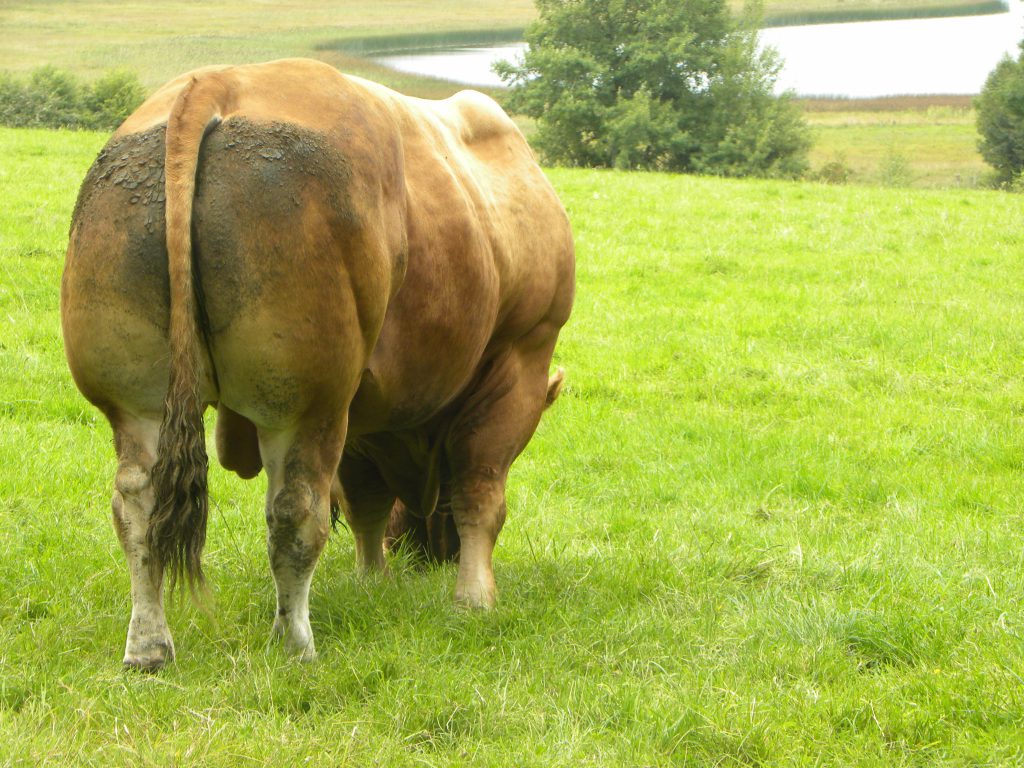For most suckler herds, the stock bull is half the herd. He’s not the big half or the small half, but a vital half.
The bull provides half the genes that is the pool of genetic traits making up the herd. He is essential for making the other half of the herd productive that is the cows and heifers by making them pregnant.
Your bull needs to score, that is score a “bullseye” with the female breeding stock in the herd.
Don’t take any half chance with your breeding stock bull. Your bull needs to be fit while in a good suitable body score condition for the forthcoming breeding season. Ensure your stock bull is on a high plain of nutrition, in perfect health, with a high viable sperm count.
Standing Power:
Can your bull stand up to the job? Hooves and legs are vital to the bull if he is to stand up to his job. Prior to the breeding season, observe stock bulls as they graze in the field. Is the bull tender on any of his hooves or dragging a let?
Has the bull any difficulty in getting up or lying down? If there is a lameness problem with your stock bull, then he will definitely not stand up to his task.
If there is a lameness problem, call veterinary assistance for prompt treatment. With a very serious lameness problem, you could end up with half a herd. Remember, 5% of all stock bulls suffer from Arthritis – now that’s no bull.
Shooting Blanks:
Is your bull shooting blanks? Hopefully not. The ability of a bull to get the cows and heifers in your herd to conceive a calf is the best indicator of his fertility. Don’t assume that the stock bull will have the exactly the same breeding performance as last year.
Up to 4% of Irish stock bulls are infertile or sub infertile. Any raised temperature due to illness in the run up to the breeding season can lead to a lowering of sperm count.
When the breeding season starts, keep tabs on early calvers, who will be the first to return to heat. Carry a pocket notebook to keep recording of the return of these early calving cows to heat.
These early calvers will be the first female breeding stock to be serviced by your stock bull. A high number of repeat heats among these early calvers may indicate an infertile or sub-infertile stock bull.
As mentioned above, lameness, joint or any hoop problem will also influence bull performance at breeding.
Prevention is better than Cure:
How true this saying is. Careful observation of the stock bull in the weeks and months before breeding season is a hugely important part of breeding management on suckler farms.
Have a backup plan in place, if you think that your bull is underperforming.
However, buying a stock bull at short notice at a local bull sale or from a breed society can be a very risky business. Ensure you have plenty of background breeding information and past health records from purchase source. It is vital that any bull is purchased from a reliable, reputable source.
Lazy Bulls:
Some breeds of bulls may appear to be “lazy” in their breeding habits. This will vary from breed to breed. A perfect example of this is Limousine bulls versus Belgian Blue bulls. If a Limousine bull is present in a field where two cows are in heat at the same time, he will breed them one after another without a break.
However, if a Belgian Blue bull is present where 2 female bovines are on heat at the same time, he will mount and breed one cow first, then lie down to take a rest before attempting to service the other cow on heat in field.
Leave him alone, he doesn’t need a helping hand.
By Anthony O’Connor, Teagasc Adviser, Galway/Clare Regional Unit


